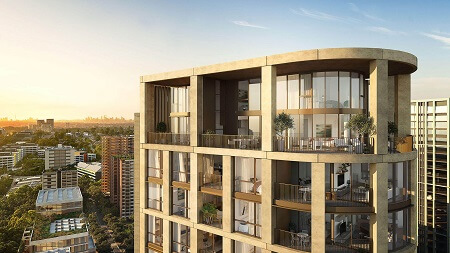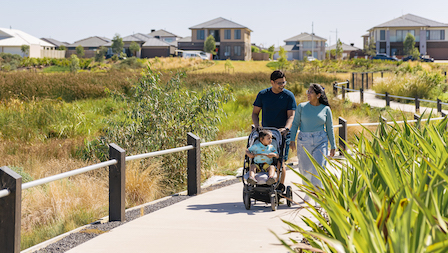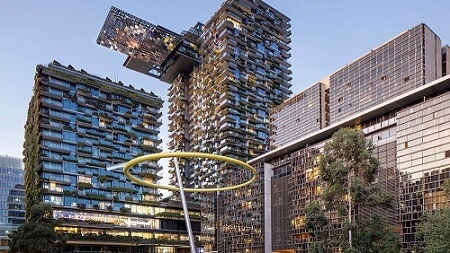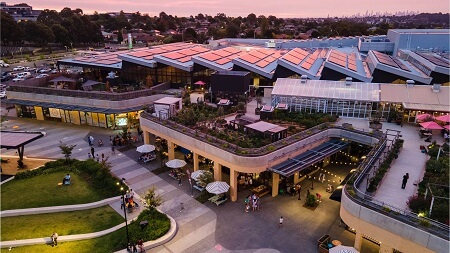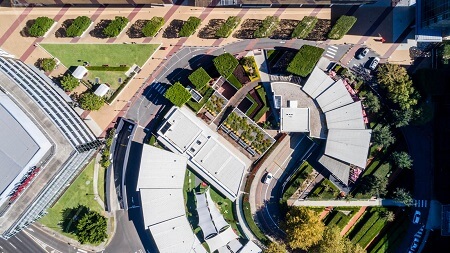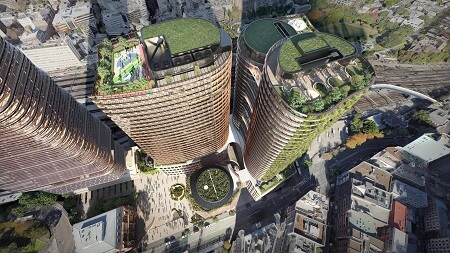How much does it cost to build a house in Australia

Thinking of building your dream home in the near future? Then you’ve probably asked this big question: how much does it cost to build a house in Australia? Or more specifically, how much does it cost to construct a house from the ground up? The answer, however, is not so simple. After all, costs can vary widely depending on where you live and what you want—from location and lot size to building materials, labour fees, and finishes. If you don’t know where to begin, keep reading as we break down average house building costs by state, compare building vs buying, and share a few tips to help you plan your budget wisely.
Key Takeaways:
- The average cost to build a house in Australia ranges from $1,600 to over $3,900 per m², depending on the design, materials, and level of finish.
- State averages vary: from around $403,000 in South Australia to over $550,000 in New South Wales, excluding land and site preparation costs.
- Major factors influencing costs include home design, site conditions, materials, labour rates, and regulatory fees such as building permits and utilities.
- To stay on budget, opt for fixed-price contracts, clear inclusions, and keep a 5–10% contingency for unforeseen costs during construction.
The average cost to build a house in Australia
In Australia, the cost to build a house in 2025 ranges anywhere from $1,600 to over $3,900 per square metre . As you can see, this amount can vary significantly, depending on the type and size of the property, as well as how simple or complex the construction requirements are. According to DuoTax , here’s how much it would typically cost to build a house in Australia:
- Around $1,600–2,700 per m² for a standard single-storey project home.
- Around $2,700–3,900+ per m² for a custom home with higher-end finishes.
If you’re wondering how much does it cost to build a house with 3 or 4 bedrooms based on the figures above, here’s the answer: depending on size and finish, you could be looking at a build cost (excluding land) from roughly $320,000 to well beyond $1 million in premium cases. Meanwhile, here’s a quick comparison of the cost difference (per square metre) between single- and two-level homes depending on the level of finish, according to BMT Quantity Surveyors’ latest report:
| Construction type | Level of finish | ||
|---|---|---|---|
| Low | Medium | High | |
| 3BR weatherboard project home, level block, single level, shelf design | $1,981 | $2,217 | $2,473 |
| 3BR brick veneer project home, level block, single level, shelf design | $2,111 | $2,351 | $2,808 |
| 3BR full brick project home, level block, single level, shelf design | $2,193 | $2,436 | $3,046 |
| 4BR weatherboard home, level block, single level, unique design | $2,781 | $2,972 | $3,709 |
| 4BR brick veneer home, level block, single level, unique design | $2,955 | $3,095 | $3,895 |
| 4BR full brick home, level block, single level, unique design | $3,305 | $3,776 | $4,161 |
| 3BR brick veneer project home, level block,two level, shelf design | $2,201 | $2,432 | $3,000 |
| 3BR full brick project home, level block,two level, shelf design | $2,283 | $2,567 | $3,149 |
| 4BR brick veneer home, level block, two level, unique design | $2,999 | $3,390 | $3,935 |
| 4BR full brick home, level block, two level, unique design | $3,315 | $3,806 | $4,155 |
| Architecturally designed executive residence | $4,400 | $5,633 | $7,879 |
Note: Prices listed are per square metre.
Level of finish: Low = basic construction, minimal fixtures and fittings. Medium = quality construction, modern conveniences and fittings. High = Top quality and luxury fittings.
So, if you’re asking how much does building a house cost, this gives you a benchmark. Of course, it excludes land, site works, landscaping and other extras, which we’ll go into more detail later.

How much does it cost to construct a house in Australia by state?
Another factor that comes into play when calculating the cost of building a house is location. For example, building a house in Adelaide or Perth would cost you a bit less than building a house in Brisbane or Sydney. Here’s a breakdown of the average building costs by state and territory as of 2025 :
| State / Territory | Average cost |
|---|---|
| New South Wales | $550,000 |
| Victoria | $510,000 |
| Queensland | $500,160 |
| Western Australia | $443,210 |
| South Australia | $403,348 |
Note: These figures represent the average estimated cost of building a new house in each region but do not account for variations in house size or design. Final costs may vary based on a myriad of factors.
Considering building your home in New South Wales? These are the best suburbs to invest in NSW.

What factors influence the cost of building a house?
When trying to understand how expensive it is to build a house, it helps to look at the many elements that shape the overall cost. From the home’s design to local labour rates and approval fees, here are 6 factors that can significantly affect your final budget.
1. Design and size
The size and design of your home have one of the biggest impacts on cost. Larger homes require more materials and labour hours, while double-storey or architecturally complex designs often cost more per square metre than single-level project homes. Features such as open-plan layouts, high ceilings, or energy-efficient inclusions can also increase expenses, but they may add long-term value and comfort. Choosing a balanced design that suits your lifestyle and budget is key.
2. Location & site conditions
Your chosen location can greatly influence the cost of building a house. Metropolitan areas such as Sydney, Melbourne, and Brisbane tend to have higher labour rates and material costs compared to regional towns. Site conditions matter too—sloping blocks, unstable soil, or limited site access can add excavation, foundation, or equipment costs. For instance, it can cost an extra $10,000 to build on a gentle slope to over $100,000 for a steep one . Even transport costs for materials can vary depending on how remote the site is. Before purchasing land, a site inspection can help you anticipate and budget for these potential challenges.
3. Materials & finishes
Building materials and finishes are another major cost driver. Standard construction materials like brick veneer and timber frames are generally more affordable, while premium options such as stone cladding, metal roofing, or custom cabinetry increase expenses. The same applies to interior finishes—fixtures, flooring, and kitchen or bathroom fittings can significantly vary in price depending on quality and brand. For example, upgrading from a basic laminate benchtop to porcelain or sintered stone (e.g. Dekton or Neolith) can increase costs by $5,000 to $6,500 . So if you’re planning upgrades, it’s best to prioritise long-term durability over aesthetic-only features to ensure lasting value within your budget.
4. Labour & builder type
Labour costs vary depending on region, demand, and the type of builder you choose. Volume builders usually have economies of scale, offering more competitive rates, whereas boutique or custom builders may charge higher margins for personalised service and attention to detail. What’s more, labour shortages across Australia’s construction industry have also driven prices sharply upward, with costs rising by 31% in the past five years . The project timeline also affects labour expenses, as delays caused by weather, material shortages, or design changes can add to your total outlay. Comparing detailed quotes from several licensed builders is a smart step toward controlling your construction budget.
5. Inclusions, upgrades, and contract type
The inclusions listed in your building contract can make a big difference to how much your home ultimately costs. Standard packages often exclude essentials such as landscaping, fencing, or driveways, which may need to be budgeted separately. Also, optional upgrades like premium flooring, appliances, or lighting can quickly add up during construction. Choosing a fixed-price or turnkey contract provides greater cost certainty, while cost-plus contracts may expose you to price fluctuations. Always read inclusions carefully before signing to avoid budget surprises.
6. Regulatory, permit & utility connection costs
Every new build must meet local council and regulatory requirements, which adds another layer of expense. Building permits alone can range from around $600 to over $3,000 , depending on your location and project size. Energy efficiency compliance, insurance, and occupancy certificates also carry their own fees.

Hidden and ongoing costs to consider
Landscaping and fencing
Landscaping and fencing are usually excluded from a standard building contract but can significantly impact curb appeal and privacy. Costs vary depending on materials, design complexity, and whether you include features like retaining walls, irrigation, or decking. Allocating a separate budget for this ensures your outdoor areas complement your home’s overall look and are completed within your financial plan.
Driveways and paths
Driveways, walkways, and access paths are another commonly overlooked expense. Materials such as concrete, pavers, or exposed aggregate can cost anywhere from a few thousand dollars upward , depending on the surface area and finish. Planning these elements early allows you to coordinate levels and drainage with your builder, avoiding later rework and ensuring your property is both functional and visually cohesive.
Utility connections (water, electricity, gas)
Connecting your new home to essential utilities like water, gas, electricity, and sometimes NBN (National Broadband Network) can add several thousand dollars to your total build cost, with charges varying depending on your state and local council. The final amount also depends on your site’s location and proximity to existing infrastructure. Factoring these connection fees into your budget early prevents surprise expenses and ensures your home is ready for occupancy without delays once construction is complete.
Maintenance and warranties post-handover
Once you move in, ongoing maintenance and warranty care become part of home ownership. This includes servicing air-conditioning units, gutter cleaning, pest inspections, and more, which should be done at least once or twice a year. Builders may offer structural warranties, but general upkeep still falls to the homeowner. Setting aside a small annual maintenance fund helps protect your investment and keeps your home in excellent condition long after completion.
Building vs buying: how do the costs compare?
Upfront vs long-term value
Buying an existing home may cost less initially, but maintenance, renovations, and outdated systems can increase expenses over time. A new build, while demanding a larger upfront investment, offers energy-efficient features, modern layouts, and warranty protection that can save money in the long run. For many, the cost to build a house pays off through lower ongoing costs and higher resale value.
Customisation vs convenience
Building a new home allows complete freedom to choose your design, materials, and finishes. This is something you rarely get when buying an existing property. However, the process can take longer and requires more involvement. In contrast, buying an established home offers immediate move-in convenience, but often with compromises on layout or style. Ultimately, the right choice depends on your priorities and timeline.
Grant eligibility for new builds
First home owners in Australia may be eligible for government grants or incentives, which can offset part of the overall cost to build a house. These vary by state, but programs like the First Home Owner Grant (FHOG) can provide thousands in savings. It’s also worth checking if you qualify for stamp duty exemptions or concessions, as these can further reduce your upfront costs. Reviewing eligibility criteria early helps you plan your budget more accurately and take full advantage of available benefits.

Tips for managing your building budget
To make sure you don’t go over budget, here are a few tips to help you control the cost to build a house:
Choosing the right builder and getting fixed quotes
Selecting a reputable builder with a strong track record can make a major difference to your overall budget. Always ask for detailed, fixed-price quotes with clear inclusions to avoid unexpected add-ons later. Transparency is key; so ensure that what’s agreed upon is reflected in your contract. Comparing these figures gives you a clearer understanding of how much it costs to build a house, helping you make informed decisions from the start.
Allowing for contingency in your budget
Even with meticulous planning, construction projects can face surprises such as soil issues, weather delays, or material shortages. To safeguard against these, allow a contingency of around 5–10% of your total budget. This buffer ensures you’re prepared for unforeseen costs without disrupting your financing. Think of it as a financial safety net that helps you stay on track and reduces stress when unexpected expenses arise.
Understanding inclusions vs upgrades
Builders often advertise competitive base prices, but these usually cover only standard inclusions. Premium fixtures, flooring, landscaping, or driveways may come at an additional cost. Review every line item carefully and ask your builder to clarify what’s part of the base contract versus what counts as an upgrade. Understanding these details early helps you set realistic expectations and prevents budget blowouts during the build.
Disclaimer:
All information set out in this article, including but not limited to estimated calculations, figures, statistics, opinions, first‑home buyer government grants, stamp duty concessions, and external links, is provided as a general guide only as at the date of publication and does not constitute advice. Actual figures and the suitability of the information may vary depending on individual circumstances. Purchasers are responsible for seeking independent professional advice or making their own enquiries. No representations or warranties are made as to the accuracy, currency, or completeness of any estimates or their contents.
Date of publication: November 2025.
A standard 3-bedroom single-storey home might cost from around $1,600 per m² upward, meaning a 150 m² home could run from ~$240,000 in low-cost regions, but more realistically closer to $300,000+ depending on finishes and site. If it includes a medium-level finish (i.e. quality construction as well as modern conveniences and fittings), then the price is around $2,436 per m², which brings the total cost of a 3-bedroom full brick single-level project home to $365,400.
Yes, various state/territory grants and incentives apply to new homes or energy-efficient builds, which can reduce the effective cost to build a house. For instance, schemes like the First Home Owner Grant (FHOG) help reduce the overall upfront costs for first home buyers. See what other grants you could apply for as a home owner in Australia.
Yes, you may negotiate certain inclusions, materials, timelines, and contract terms with your builder. Fixed-price contracts help avoid later cost increases. It’s also helpful to compare multiple quotes to understand where there’s room to negotiate fairly.
Yes, many lenders offer combined land and construction loans under progress drawdown structures, allowing you to finance both purchase and build phases. These loans typically release funds in stages as construction progresses, helping you manage cash flow more efficiently.
Maintain a clear scope of work, conduct thorough site assessments (soil, flood, slope), include a contingency of 5–10% of your total budget, and secure a fixed-price contract where possible. Regularly reviewing progress claims and variation requests also helps keep your budget under control.
See more articles on


